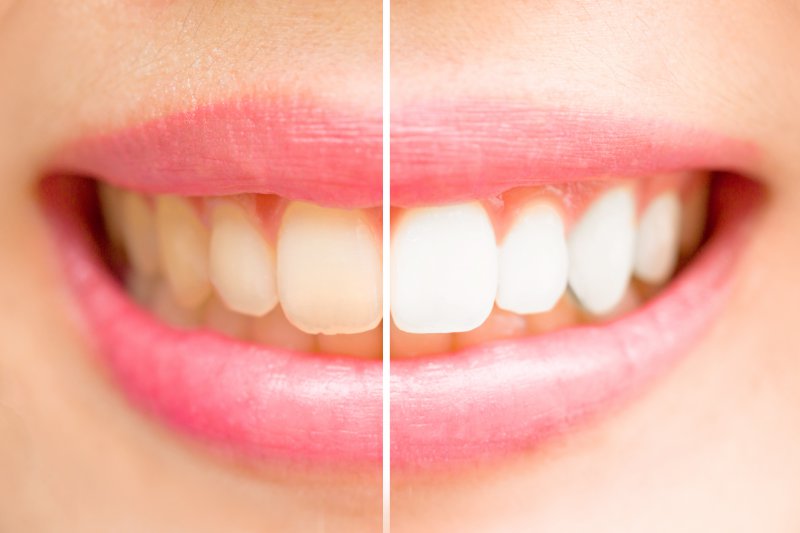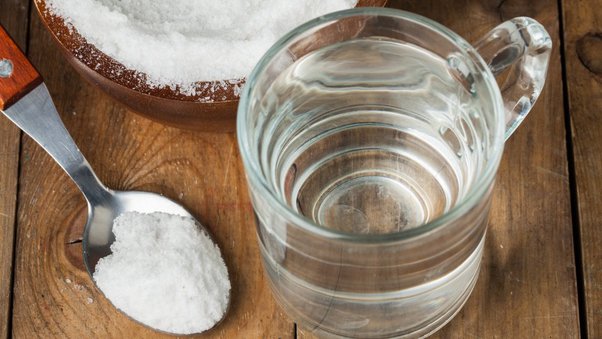A gleaming, ivory grin is a coveted trait for countless individuals, as it can enhance self-assurance and elevate one’s overall aesthetic appeal. Despite the plethora of teeth whitening alternatives currently available, not all of them are reliable or secure. In-office treatments can be exorbitant, while over-the-counter remedies may induce sensitivity or harm to teeth and gums. Fortunately, there are numerous at-home teeth whitening solutions that are both safe and effective. Without further ado, let’s explore some of the finest options to consider for achieving a dazzling smile.

Whitening Toothpaste
When it comes to achieving a brighter, whiter smile, using whitening toothpaste is an incredibly simple and accessible option. This type of toothpaste is specially formulated with mild abrasive. They effectively remove surface stains and polish teeth, leaving them looking brighter and shinier.
Although whitening toothpaste is generally considered safe and straightforward to use, it’s important to note that it may take several weeks or even months of consistent use before you can notice any visible results. Nonetheless, this is still an incredibly convenient and affordable way to enhance the appearance of your teeth without having to leave the comfort of your own home.

Whitening Strips
Teeth whitening strips have become increasingly popular for individuals seeking at-home teeth whitening treatments due to their affordability, ease of application, and ability to produce noticeable results. The gel in these plastic strips penetrates the enamel with a peroxide-based solution when applied directly to the teeth, delivering results that can last for several months.
Compared to other methods such as trays, teeth whitening strips provide a more extended exposure to the whitening chemical. The manufacturer’s instructions for the strips will specify the recommended daily usage, including how long to wear them and how many days to use them for optimal results. Typically, individuals will wear the strips twice a day for a short period, usually between 10 to 30 minutes. This daily regimen lasts for about two weeks, allowing users to see visible results.

Whitening Trays
Custom-fitted plastic trays are a popular method of teeth whitening. These trays hold a gel that contains peroxide, which is placed against the teeth. People wear the trays for a few hours a day or overnight, for several weeks. Although more expensive than other at-home options, whitening trays can be very effective.
However, users should be cautious as they can cause sensitivity and gum irritation if not used properly. It is important to follow the instructions given by the manufacturer, to avoid overuse or improper fitting of the trays. Despite their potential drawbacks, whitening trays remain a popular choice for those seeking to brighten their smile. A dental professional’s recommendation is necessary for individuals with extensive dental work or teeth sensitivity before using any whitening treatment.

Oil Pulling
Oil pulling, an ancient Ayurvedic practice, involves swishing oil, typically coconut oil, in the mouth for several minutes to enhance oral health and brighten teeth. Although limited scientific evidence exists to validate the claimed benefits, some individuals have reported positive outcomes. This safe and cost-effective technique is worth a try, although it may take several weeks or months to see improvements. The underlying principle of oil pulling is that it removes toxins and bacteria from the mouth, resulting in better oral hygiene.

Baking Soda
Baking soda is a natural substance that has abrasiveness properties which can effectively remove surface stains and whiten teeth. However, excessive or vigorous use of it may cause abrasions on the tooth enamel. To utilize baking soda for teeth whitening, one should make a paste by mixing a small amount of baking soda with water, then apply it to the teeth and brush for one to two minutes. After using baking soda, it is essential to rinse the mouth thoroughly to avoid swallowing it.
It is also recommended to use it only as a supplementary measure to regular brushing and flossing and to consult with a dentist before incorporating it into a dental care routine. By using baking soda responsibly and correctly, one can enjoy its benefits for improving the appearance of their teeth.

Activated Charcoal
Activated charcoal has gained widespread popularity as a natural teeth whitening solution. It is a finely textured black powder that is derived from carbon-rich sources such as coconut shells or bamboo. The process of “activation” involves heating the carbon-rich materials to very high temperatures, which creates numerous tiny pores that increase the surface area of the charcoal and make it highly porous.
To use activated charcoal for teeth whitening, one must wet a toothbrush and dip it into the powder. Then, brush the teeth for a minute or two, making sure to cover all areas of the teeth thoroughly. After brushing, it is important to rinse the mouth thoroughly with water to remove any remaining traces of the charcoal. You should also take care to rinse any residue of the charcoal from clothing or surfaces, as it may cause staining.
In conclusion, you can whiten your teeth safely and effectively at home using various methods. However, it’s important to choose the right option for your needs and to use it properly. If you experience sensitivity or discomfort, stop using the product and consult a dentist. Remember that teeth whitening is not a substitute for good oral hygiene practices like brushing, flossing, and regular dental check-ups. With the right approach, you can achieve a brighter, whiter smile safely and affordably.


